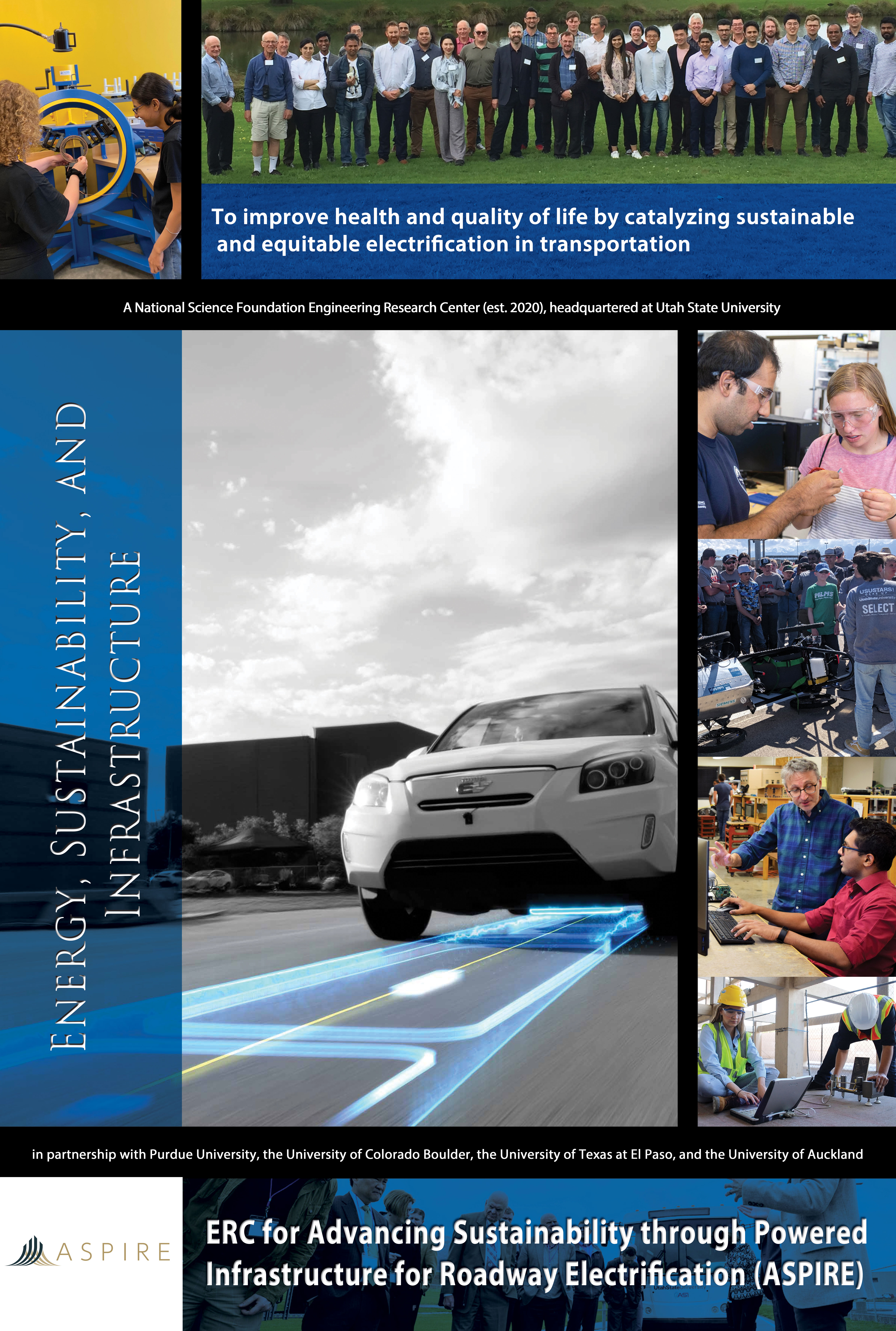NSF Engineering Research Center for Advancing Self-Sufficiency through Powered Infrastructure for Roadway Electrification

The ASPIRE center has been launched at a critical moment in U.S. history. Vehicles drive our national economy. In the U.S. alone, they transport more than 11 billion tons of freight and travel over 3 trillion miles per year. However, vehicle emissions have serious impacts on public health and the environment, and fluctuating oil prices affect household budgets as well as our national economic stability and security. Electric vehicles (EVs) offer tremendous opportunity to both reduce emissions and stabilize and reduce costs. But significant challenges remain in the pursuit of widespread adoption of EVs; these challenges are centered around range and the supporting charging infra-structure. At the same time, nationwide, both the transportation and electric utility infrastructure need extensive renovation, and major investments are expected in the near future (billions of dollars in the near term to hundreds of billions over the next 30 years). Now is the time to rethink these industries and set in motion plans to build for a future de-signed for widespread electrification, rather than rebuild the past.
Energy and Sustainability
Energy, Sustainability, and Infrastructure
Location
Lead Institution
Start Year
Website
Fact Sheet
Core Partners
Center News and Achievements
Locations
Additional Information
Focus
Create sustainable, equitable, and widespread electrification of vehicles by creating low-cost, ubiquitous, and worry-free charging
Graduation Date
Education Web Page
Research Opportunities for Undergrads
Student Leadership Council
NSF Engineering Research Center for Advancing Self-Sufficiency through Powered Infrastructure for Roadway Electrification

The ASPIRE center has been launched at a critical moment in U.S. history. Vehicles drive our national economy. In the U.S. alone, they transport more than 11 billion tons of freight and travel over 3 trillion miles per year. However, vehicle emissions have serious impacts on public health and the environment, and fluctuating oil prices affect household budgets as well as our national economic stability and security. Electric vehicles (EVs) offer tremendous opportunity to both reduce emissions and stabilize and reduce costs. But significant challenges remain in the pursuit of widespread adoption of EVs; these challenges are centered around range and the supporting charging infra-structure. At the same time, nationwide, both the transportation and electric utility infrastructure need extensive renovation, and major investments are expected in the near future (billions of dollars in the near term to hundreds of billions over the next 30 years). Now is the time to rethink these industries and set in motion plans to build for a future de-signed for widespread electrification, rather than rebuild the past.
|
LocationLogan, Utah
|
Lead InstitutionUtah State University
|
Start Year |
Website |
Fact SheetDocument
|
Core PartnersPurdue University
University of Colorado
University of Texas at El Paso
|
FocusCreate sustainable, equitable, and widespread electrification of vehicles by creating low-cost, ubiquitous, and worry-free charging |
Graduation Date |
Education Web Page |
Research Opportunities for Undergrads |
Student Leadership Council |
Center News and Achievements
Locations
NSF Engineering Research Center for Advancing Self-Sufficiency through Powered Infrastructure for Roadway Electrification

The ASPIRE center has been launched at a critical moment in U.S. history. Vehicles drive our national economy. In the U.S. alone, they transport more than 11 billion tons of freight and travel over 3 trillion miles per year. However, vehicle emissions have serious impacts on public health and the environment, and fluctuating oil prices affect household budgets as well as our national economic stability and security. Electric vehicles (EVs) offer tremendous opportunity to both reduce emissions and stabilize and reduce costs. But significant challenges remain in the pursuit of widespread adoption of EVs; these challenges are centered around range and the supporting charging infra-structure. At the same time, nationwide, both the transportation and electric utility infrastructure need extensive renovation, and major investments are expected in the near future (billions of dollars in the near term to hundreds of billions over the next 30 years). Now is the time to rethink these industries and set in motion plans to build for a future de-signed for widespread electrification, rather than rebuild the past.
Energy and Sustainability
Energy, Sustainability, and Infrastructure
Location
Lead Institution
Start Year
Website
Fact Sheet
Core Partners
Center News and Achievements
Additional Information
Focus
Create sustainable, equitable, and widespread electrification of vehicles by creating low-cost, ubiquitous, and worry-free charging
